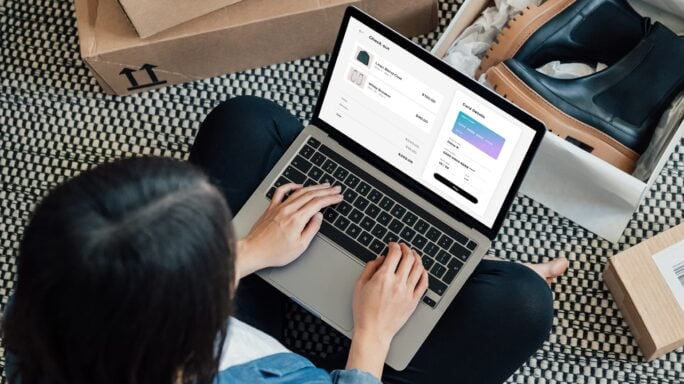Money Matters
Five fast tips for restaurants looking to minimize revenue loss during COVID-19

We are all facing unprecedented times with COVID-19. Not only are individuals affected in profound ways, but businesses are also severely feeling the impact. Hospitality though, is one of the hardest hit sectors of this crisis. Restaurants especially are facing a sudden loss of revenue due to many city and state directives to close all on-premise dining. It’s essential now more than ever for restaurants to have a plan to minimize loss of revenue.
1. Continue supporting your team
Before COVID-19 hit, restaurants were struggling with hiring and retaining quality employees in a tight labor market. Supporting your team now will not help your employees to better weather these difficult times but will earn you good will and help to retain critical staff. Some restaurant management are paying their employees’ salary, even sometimes from their own wages. The owner of Tutta Bella Neapolitan Pizzeria in Seattle is using his own paycheck to provide his employees with sick leave. Offering paid sick leave is one way to ensure that sick employees stay home rather than coming into work when sick or infected. It also allows employees to know that you care about them and their health. Similarly, employees that do show up to work while sick can be immediately sent home without the employee worrying about lack of pay. Some restaurants are supporting their employees’ mental health by setting up EAP plans (Employee Assistance Program) that connect employees to confidential counselors as needed.
2. Start or ramp-up take-out and delivery.
Many cities and states are now mandating restaurants close except for take-out, pick-up and delivery. Some restaurants have already been working with third party delivery systems. Restaurants that are achieving highest profitability are those that have carefully crafted their menu to weed out labor intensive and under-performing items. Additionally, it’s best to focus on menu items needing the least amount of labor and that yield the highest profit margins.
Other restaurants that have not used thirty party delivery have been understandably resistant to bite into already tight margins with steep third-party delivery fees. However, some of the third-party delivery services are deferring or even waiving commission fees for independent restaurants impacted by COVID-19, so this could be a good time to try it out. Another option is to redeploy employees as in-house delivery drivers (following social distancing guidelines of course). This may have an added benefit of helping to keep as many staff as possible employed. Maintaining your own delivery team can be up to 50% cheaper than third parties, you keep all of the revenue and you can better control the customer experience while preserving your brand. Setting up your own delivery can take some time though, and there are considerations to factor such as hiring additional right staff, added insurance, specialized packaging, etc).
While it can be difficult to implement in-house delivery right away, you can start quickly with a third-party delivery service and then you can shift to in-house at a later time if that works for your restaurant. In the meantime, your benefits are a quick start, the ability to attract more millennials (and Gen Y) customers and the opportunity to potentially attract new customers that you may not have reached via foot traffic. It may be beneficial to look into more than one delivery service to evaluate which is the best for you, and you shouldn’t sign any exclusive contracts that limit your ability to partner with other services.
3. Adapt Your Menu.
Regardless of which delivery channel you use, it’s important to track which items are most popular as well as the profitability for each item, since this may be very different than in-restaurant items. Food portability is an important consideration as well as using items with low food cost variability (such as avocados). Another tip is to streamline offering to those that take fewer staff to prepare, and limit ingredients to those that can work across your other offerings. Some restaurants are finding success by being creative and even completely changing their menu. For example, Canlis in Seattle is a well-known and established fine dining restaurant. The owners quickly realized that fine dining cuisine was not what people wanted or needed during these turbulent times. They’ve switched their fine dining menu to instead offer casual bagel shop items as well as a drive-through burger stand. They’ve also switched to meal delivery and were able to keep all 115 employees by turning some into delivery drivers. Optimizing your take-out and delivery items can greatly help in the effort to protect margins and may even open up new revenue opportunities.
4. Shift to Local Support Themes.
There’s been a big push on social media for consumers to support local restaurants by purchasing gift cards. This is valuable to restaurants since on average 80% of customers spend more than the value of their gift when using one. One idea to encourage gift card purchases is to offer escalating perks at different levels. For example, maybe offer a complementary dessert for a $50 gift card or a bottle of wine for a $200 gift card etc.
5. Be Creative to Break Through Noise.
Another idea that we are seeing savvy restaurants doing right now is getting creative with their offerings. Beacon Tap, a Chicago-area restaurant, is offering free toilet paper with every delivery or takeout order. General manager Tommy Riemer reports that customer response from this offer has been amazing, “We were able to bring in extra employees yesterday because we were so busy and it was really awesome.” Others are testing new concepts like meals-in-a-box for the whole family, incorporating hard to find grocery items around particular themes like picnic, movie-night etc. Some states are allowing restaurants to sell alcohol off-premise, with varying conditions for each state. Alcohol has a high profit margin, so another idea is to encourage purchase with a takeout menu that includes wine or cocktail pairings.
We hope that we’ve been able to spark some ideas for your restaurant in these very difficult times. We at Sage Intacct know how difficult it is for restaurants right now, and the challenges that lie ahead for the weeks and months to come. In this most difficult time, Sage Intacct is committed to supporting our Hospitality and restaurant customers, as well as the Hospitality industry in general. Please let us know if there any additional topics that you would like to hear about, or if you have best practices that we can share with other restaurants.
Additional resources:
National Restaurant Association Coronavirus Information Center
U.S. Small Business Administration Disaster Assistance for Smalll Businesses Impacted by COVID19
National Restaurant Association Webinar: Coronavirus Industry Readiness and Response
Rally for Restaurants connects together consumers and restaurants to help give restaurants a fighting chance during the COVID crisis.







Ask the author a question or share your advice